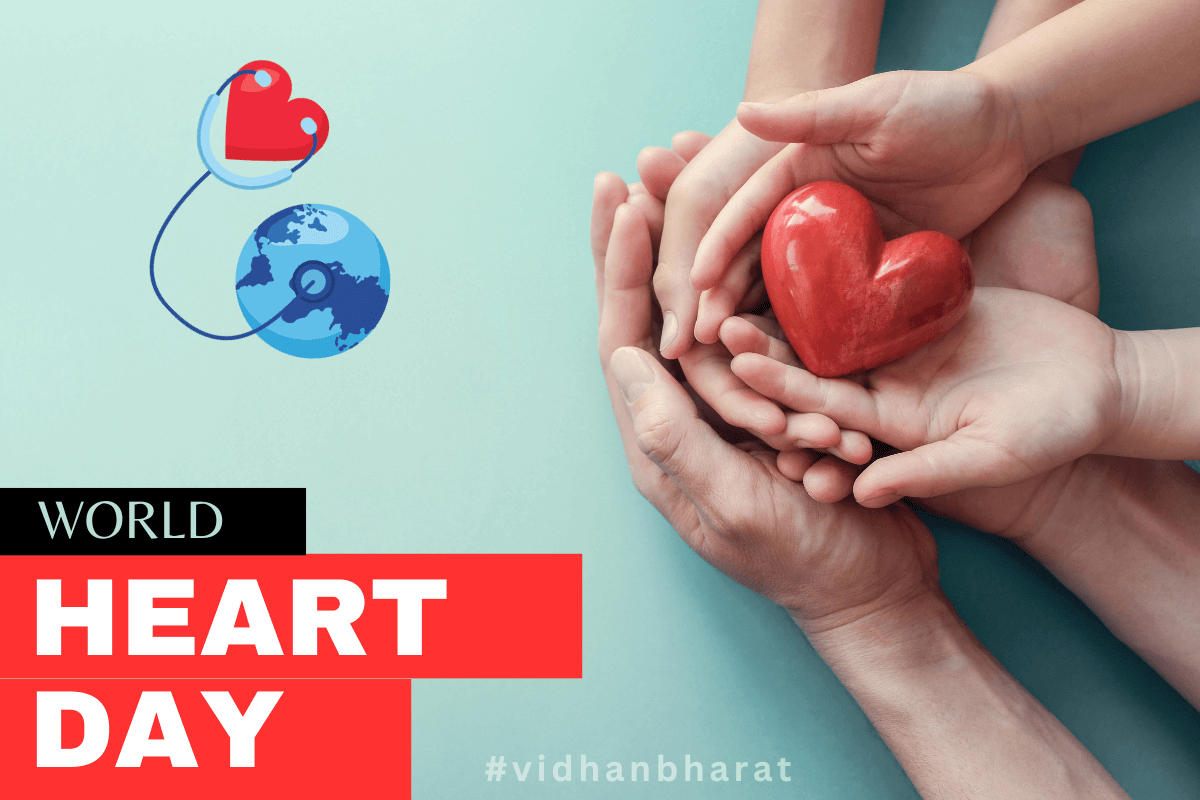
Did you know that your heart is the size of your fist and the strongest muscle in your body?
About three weeks after pregnancy, the heart starts beating. If you live 70 years, it will beat two and a half billion times. However, although the heart muscle is very strong, it can become vulnerable to common risk factors such as smoking, diabetes, cholesterol, eating an unhealthy diet, or living with high blood pressure.
World Heart Day, celebrated on September 29 every year, is an initiative by the World Heart Federation (WHF) to draw attention to the importance of heart health worldwide. The day serves as a reminder of the growing global burden of heart disease and stroke, and aims to empower individuals and communities to take control of their heart health.
Cardiovascular disease (CVD) is the world's number one killer, causing more than 20.5 million deaths annually.
CVD describes a range of conditions that affect the heart or blood vessels (veins and arteries). Includes:
Blood vessel disease, such as coronary artery disease.
Irregular heartbeat (arrhythmia).
Congenital heart diseases.
Heart muscle disease.
Heart valve disease.
Symptoms of heart disease or symptoms of heart pain
The symptoms of heart disease are different for each person. Some heart diseases do not cause any symptoms at all, but in general, the symptoms of heart disease include the following:
Angina or chest pain
Difficulty breathing
tiredness
lightheadedness
Swelling caused by fluid retention or edema
Inability to do daily activities such as walking, climbing stairs, or doing housework
Symptoms of congenital heart defects in children may include cyanosis (dark and bluish skin color) and inability to exercise.
Some of the symptoms indicate that the normal heartbeat is disturbed and indicate a heart attack. These symptoms include:
chest pain
panting
heartbeat
nausea
heartache
sweating
Pain in the hand, jaw, back, or leg
feeling of suffocation
Swelling in the ankle
tiredness
Irregular heartbeat or arrhythmia
A heart attack can lead to cardiac arrest. That is, when the heart stops and can no longer function. If you see symptoms of a heart attack, you should see a cardiologist.
Diagnosis
Diagnosis of heart disease includes various methods such as medical history evaluation, physical examination, blood tests to measure the level of cardiac enzymes, electrocardiogram (ECG), stress test, echocardiogram, cardiac catheterization, angiography, CT scan, and MRI. These diagnostic tools help determine the presence of heart disease, assess its severity, and guide treatment decisions.
Usually, doctors start the diagnosis process by asking about the time, quality and how the symptoms of the disease appear during the meeting with the patient. Heart disease is diagnosed through a series of tests and careful medical evaluations. This process includes taking a medical history, performing electrocardiography (ECG) tests to record the heart's electricity, blood tests to measure blood markers such as troponin, imaging of the heart and blood vessels using echocardiography and angiography, and in some cases equipment tests such as exercise testing or stress testing. cardiac (treadmill exercise test) to provide an accurate diagnosis.
Since the correct treatment depends on timely diagnosis, the doctor's knowledge and skill in using the appropriate diagnostic method in the shortest possible time is very important and helps in the better treatment of heart diseases and prevention of a number of their serious complications and making decisions about Which tests should be performed depends on the characteristics of the disease and the condition of each patient. Among the tests that doctors use to diagnose heart diseases, the following can be mentioned:
Heart biopsy
Exercise test
blood test
Echocardiogram
Check the pulse
Holter monitoring
Carotid ultrasound
Mobile electrocardiography
Blood pressure measurement
tilt test (syncope test)
Electrocardiogram (heart tape)
MRI imaging
Cardiac CT scan
Cardiac angiography (cardiac catheterization)
Chest X-Ray
Physical examination and blood test are two important methods in diagnosing heart diseases. These tests help your doctor assess your cardiovascular condition and make appropriate treatment and management decisions. The physical examination begins by listening to the heart and lungs using a stethoscope. Your doctor may detect symptoms such as irregular heart or lung sounds, and he or she may measure your blood pressure and see changes in it.
Blood tests can give many clues about heart health. By measuring the levels of blood markers such as troponin, creatinine kinase (CK), and CK-MB, etc., the doctor can get information about the condition of the heart muscle and the occurrence of damage to it. These tests may show changes such as increased blood markers (if the heart muscle is damaged).
Below are the most important blood tests used to diagnose and manage heart disease.



